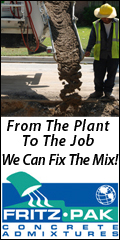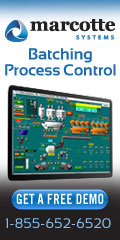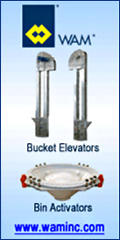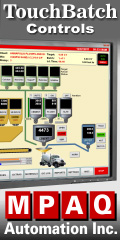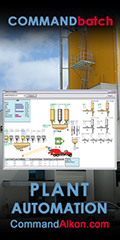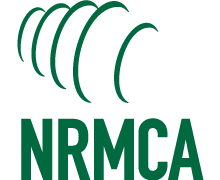
| Archive | nrmca.org | E-Store | Conferences & Events | Certifications | InFocus |
NRMCA Attends ASTM Meeting, Submits Committee Updates The following is a summary of actions from the ASTM Committees C01 on Cement and C09 on Concrete attended last month in San Diego by NRMCA staff.
C09.20 Concrete Aggregates - A minor revision was approved for ASTM C33, Specifications for Concrete Aggregates, in that aggregates for decorative concrete will have the same requirements as those used for architectural concrete. The subcommittee discussed criteria for acceptable service record for aggregates for alkali silica reactivity and some revisions might be proposed. A ballot proposing to recognize recycled crushed concrete as aggregate for use in concrete in ASTM C33 was not successful. Revisions were approved to C127 and C128, Methods for Measuring Specific Gravity and Absorption of Aggregates, to indicate that these methods were appropriate for lightweight aggregate. Revisions were in process for C88, C117, C566 and C1252 in future ballot activity.
A task group working on a specification for ground calcium carbonate and other mineral fillers for use in concrete has developed an initial proposal. However, the discussion was on whether this specification should be limited to milled limestone or broadened to include aggregate crusher fines with alternative mineralogy in this specification. No clear decision was arrived at. This specification will support the use of mineral fillers in concrete, which may be used in self-consolidating concrete or for other purposes. A new rapid (5 minute) test method to determine the methylene blue index (MBI) of aggregate was balloted and is moving forward in the balloting process. The purpose of the test is to identify the presence of active clay in aggregate samples or in mineral fillers.
C09.24 Supplementary Cementitious Materials - The proposed revision to C618 that requires the reporting of calcium oxide (CaO) content and total alkali content of fly ash has passed the subcommittee and will be balloted at the main committee. The subcommittee discussed evolving legislative activity regarding the EPA proposal to address fly ash proposal and beneficial use.
C09.26 Chemical Reactions - An inter-laboratory study was recently completed for the concrete prism test, ASTM C1293 for Determining the Reactivity of Aggregates. This study will be used to update the precision statement of the method. The subcommittee is evaluating the accuracy to which the result has to be reported (to the nearest 0.001% or to 0.01%) relative to the typical acceptance criteria of 0.04%.
C09.40 Ready Mixed Concrete - No significant revisions were approved at this meeting. Ballot activity included eliminating limits on delivery time (90 minutes) and 300 revolutions. Based on the response, the subcommittee is deciding which of these to move forward in future revisions. The other item addressed automated slump measurement devices in truck mixers and water addition in transit. This item is moving forward in the balloting process. Items in line for future revisions include requirements for plant scale verification, changes to the air content table, process of resolution of disputes with strength tests, addressing reuse of fresh returned concrete and revisions to the methods used for chemical analysis of non-potable mixing water.
C09.49 Pervious Concrete - Four ASTM methods on pervious concrete have been standardized thus far – ASTM C1688 on Fresh Density, C1701 on Field Infiltration Rate, C1747 on Resistance to Impact and Abrasion and C1754 Hardened Density and Void Content. Several new items were discussed for all of the above methods. After much discussion, the subcommittee voted that a compressive strength test method should be developed even if it is more variable than normal concrete. Such a test can be used for mix qualification. A final round robin is scheduled later this summer and a subcommittee ballot is planned before the December meeting.
C09.50 Risk Management for Alkali Aggregate Reactions (AAR) - A new subcommittee ballot issued on a new practice "Determining Reactivity of Concrete Aggregates and Minimizing Risk of Deleterious Expansion" drew 13 negatives. Changes to title and scope were discussed. The item was withdrawn and will be reballoted. The standard being balloted is similar to that published by the Canadian Standards Association (CSA) and is published as an AASHTO provisional standard PP65.
C09.60 Fresh Concrete Tests - Minor revisions are in the works for most of the fresh concrete tests, none approved in this cycle. Discussion included changing the requirements for initial curing of test specimens in ASTM C31 on transportation time and handling at the lab to make it easier on lab processing of test specimens and some of these revisions will be proposed in future ballots. A precision statement has been proposed for measurement of air content using the pressure method, ASTM C231. Another proposal to revise sampling procedures in C172 by obtaining the sample in one portion received several negatives and will be revised and balloted in future. A new proposed method approaching final approval on measurement of water content of concrete using the microwave oven was on hold subject to resolution of duplication of AASHTO standard T318.
C09.61 Strength - Several revisions are in process for standards under this subcommittee. A clarification to C42 regarding measuring density of cores (which is required) will be revised based on response. A proposal to measure weight of standard cured cylinders before measuring strength in C39 received several negatives and this will be dropped. It is required to measure the weight only when requested by the specifier of the test. Testing machine verification frequency was clarified to not exceed 13 months.
C09.66 Fluid Penetration - A new conductivity test (ASTM C1760) has been developed. The procedure is similar to ASTM C1202, the "rapid chloride permeability" test. The conductivity test has several advantages – molded cylinders do not have to be vacuum saturated; the existing C1202 test set up can be used; specimens need not be epoxy coated; the conductivity measurement is performed for 1 minute as opposed to the 6 hours required for C1202 and avoids temperature rise in the specimen and the associated effect on the conductivity/resistivity measurement. For C1585 (Sorptivity test) vacuum saturation of field cores was taken as a new ballot item and negatives were discussed. There are many different resistivity (bulk and surface) test methods. Under ideal conditions their results should match. The subcommittee is likely to be developing new resistivity test methods. A new test method on drying rate of concrete was also discussed. Such a test method will provide results that can be used for service life modeling.
C09.67 Resistance to Environment - Changes to ASTM C672 - Scaling Test was discussed. A new salt scaling test which includes 7 days of sodium chloride immersion followed by freezing and thawing under ¼ in. of sodium chloride was discussed.
C01.10 Cement - ASTM C595 on blended cement has been revised to permit between 5 and 15% limestone to be characterized as Type IL blended cements. Limestone, up to 15%, can be included in ternary blended (Type IT) cements also. Revisions are being made to clarify some of the language. At this point C595 includes an annex that describes methods to qualify the blended or interground limestone for limits on methylene blue index (for presence of excessive clay) and for total organic carbon. The subcommittee may decide to eliminate these qualification requirements based on current research being performed by the Portland Cement Association. Similar revisions have been approved to the equivalent AASHTO standard for blended cements. Revisions to cement standards are coordinated by an AASHTO-ASTM Harmonization Task Group to ensure similar requirements are established in the ASTM and AASHTO versions of standards for cements.
C01.98 Sustainability Assessment - This new subcommittee in the Cement Committee (C01) has been established and had its preliminary meeting. The purpose of this subcommittee is to support the development and maintenance of standards related to methodologies and metrics for assessing sustainability in the manufacture and use of hydraulic cement. The intent is to develop a standard outlining product category rules (PCRs) for environmental product declaration (EPD) of hydraulic cement. EPDs of construction materials are used in life cycle assessment of buildings. Committee E60 is developing an encompassing standard for developing PCRs for building materials. The Portland Cement Association, an ANSI approved standards development organization, is completing a PCR standard for cement that is likely to be used by this subcommittee. The Concrete Committee (C09) is also considering establishing a subcommittee to develop a PCR standard for concrete. NRMCA is involved in the development of this standard through the Carbon Leadership Forum.
Workshops - Workshops were scheduled on two topics - on Ready Mixed Concrete Industry Perspective on Requirements for Alkali Silica Reactivity (ASR) and a second one on Geopolymer-based Cementitious Materials. In the ASR workshop NRMCA’s Colin Lobo discussed the evolution of requirements for ASR and the considerable variations on ASR requirements in specifications by state highway agencies and for other public and private work. Problems arise from the severity of some of the ASR tests to accurately capture field performance and more conservative criteria that detract from other performance requirements of concrete. Kevin Wolf with CalPortland, Steve Fleming with Prairie Materials and Nick Popoff with St. Mary’s Cement provided perspectives from the Northwest, Midwest and Canada, respectively. Jason Idekar, chairman of Subcommittee C09.50, discussed the development and general outline of the ASTM Guide for ASR, based on AASHTO provisional standard PP65.
For more information, contact Colin Lobo at clobo@nrmca.org.
|
|
|
